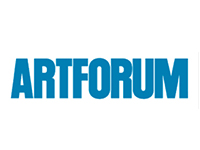
by Donald Kuspit
At once staged and manicured, Erwin Olaf’s photographs put us in a suspenseful space. The key to this exhibition – and, more specifically, to nine of the twenty-two works on view – was a video clip in the multimedia installation of Waiting, 2014, which shows a young woman, her clothes stylishly simple, her expression demure and revealing her to be lost in self-absorption, sitting at a table in a chic restaurant. The chair opposite her is empty; she’s waiting for someone—to join her. We, the spectators, face her, but she’s not waiting for us. She thumbs through a menu, no sign of impatience furrowing her features. There’s an air of bated breath; we don’t know the end to this story.
This same scenario – the presentation of a fashionable, seemingly self-possessed, classy young woman who is isolated yet independent – appears again and again, no matter how much she or her location changes. We see the profile of the young woman from Waiting in Portrait 1, Shenzhen, and three-quarters of her face in Portrait 2, Shenzhen, both 2014. We see her again in two other works from 2014: seated alone at a dining table in Shenzhen 2, the chair opposite of her empty; and in the same seated pose, as poised as ever, in Shenzhen 3. In Nairobi 1, Nairobi 2, and Nairobi 3, all 2014, a different women of the same well-to-do class poses with modern furniture in what looks like a hotel lobby. Caroline, 2007, finds another elegant young woman seated opposite an empty chair; a coffee table familiar from Nairobi 2 is at her side. Seated on the edge of her chair, her face averted from us, she seems more emotional than the other figures. Figure, furniture, and the flat wall of luminous glass are all props in a little theater of loneliness that is Olaf’s theme. These women have been stood up; their Godot will never arrive.
And not only women are afflicted with loneliness and existential despair in Olaf’s work. Such a mood also distinguishes Troy Portrait, 2007, and Keyhole 3, 2011. The former portrays a boy as a window, his arms raised high, suggesting he is at a loss; the latter depicts a girl, apparently also depressed, from behind, her head tilted downward. The Boy Scout in The Ice Cream Parlor, 2004, stands at isolated attention; the fighters in The Boxing School, 2005, face away from each other, each alone in his muscular glory. Olaf is meticulously finicky about the shapes and sizes of his figures and about their placement and poses and the objects that accompany them – indicators of social position and status – in the scene. He is particularly sensitive to the tonalities of light and color. We are drawn to his forms’ compositional acumen – the aesthetic substance of his art – for that is what carries emotions. The figures otherwise seem emotionless, outwardly present but inwardly absent. Without their formal subtlety as lively as waxworks in Madame Tussaud’s Museum.